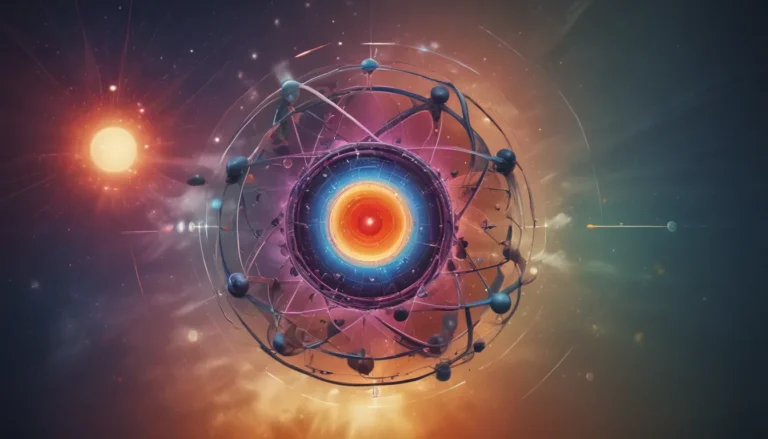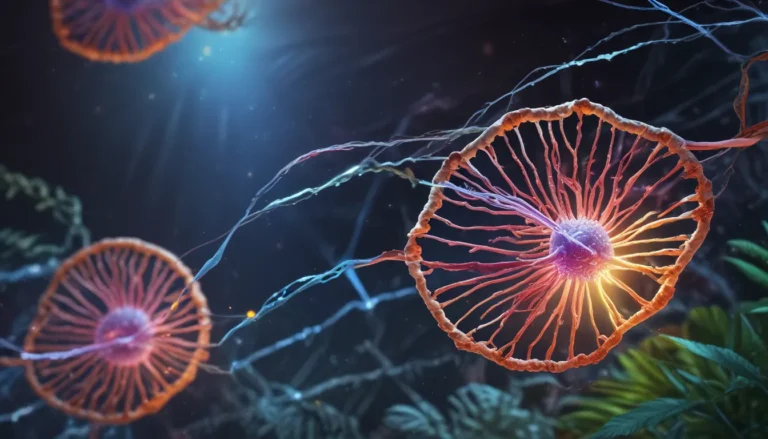A Note About Images: The images used in our articles are for illustration purposes only and may not exactly match the content. They are meant to engage readers, but the text should be relied upon for accurate information.
Are you ready to dive into the intriguing world of the Clausius-Clapeyron equation? This fundamental concept in thermodynamics, developed by Rudolf Clausius and Benoît Paul Émile Clapeyron in the 19th century, offers a wealth of information about the behavior of gases and vapors. From phase transitions to industrial processes, this equation plays a crucial role in various scientific fields.
Key Takeaways:
- The Clausius-Clapeyron Equation is a powerful tool that helps us understand how temperature and pressure affect phase transitions, from boiling to cloud formation in meteorology.
- This equation, developed by Clausius and Clapeyron, is crucial in studying thermodynamics, phase diagrams, and even optimizing industrial processes.
- Its applications span across various scientific fields, making it a fundamental concept to grasp.
Understanding the Clausius-Clapeyron Equation
The Clausius-Clapeyron Equation serves as a powerful tool used to describe the relationship between temperature and vapor pressure during phase transitions. It helps us comprehend how the equilibrium vapor pressure of a substance changes with temperature, shedding light on the complexities of phase transitions.
The Pioneers Behind the Equation
Named after Rudolf Clausius and Benoît Paul Émile Clapeyron, the Clausius-Clapeyron Equation was independently derived by these two visionaries in the mid-19th century. Their groundbreaking work revolutionized the field of thermodynamics, paving the way for a deeper understanding of phase transitions.
Applications to Phase Transitions
The Clausius-Clapeyron Equation is applicable to various phase transitions, including vaporization, condensation, melting, and sublimation. By providing insights into how equilibrium conditions change with temperature and pressure during these transitions, the equation offers valuable information for scientists and researchers.
Predicting Boiling Points
One of the key applications of the Clausius-Clapeyron Equation is its ability to predict the boiling point of a substance at different pressures. This predictive capability is essential for understanding how changes in pressure impact the boiling point of liquids, offering valuable insights for various applications.
Entropy and Equilibrium
Central to the Clausius-Clapeyron Equation is the concept of entropy, which measures the disorder in a system. By considering how changes in entropy influence phase transitions and equilibrium conditions, the equation offers a comprehensive understanding of the underlying principles at play.
Versatility Across Ideal Gases and Liquids
While the Clausius-Clapeyron Equation can be applied to both ideal gases and liquids, it is most accurate for substances that closely follow ideal gas behavior. For liquids, the equation assumes a constant heat of vaporization over the temperature range of interest, allowing for practical applications in real-world scenarios.
Real-World Applications in Meteorology
The Clausius-Clapeyron Equation finds practical applications in meteorology and atmospheric science, offering insights into how changes in temperature and pressure influence cloud formation, moisture release, and precipitation. Its utility extends to understanding and predicting weather phenomena with a scientific basis.
Constructing Phase Diagrams
Phase diagrams are critical in illustrating the various phases of a substance under varying temperature and pressure conditions. The Clausius-Clapeyron Equation plays a key role in constructing and analyzing these diagrams, providing valuable insights into the equilibrium conditions at different points.
Derived from Thermodynamic Principles
At its core, the Clausius-Clapeyron Equation is derived from the first and second laws of thermodynamics, which govern energy conservation and entropy. By mathematically representing these fundamental principles, the equation offers a systematic framework for understanding phase transitions.
Simplifying Assumptions for Calculations
To streamline calculations, the Clausius-Clapeyron Equation assumes an idealized, constant enthalpy process during phase transitions. This simplifying assumption allows for a more straightforward mathematical formulation, enabling researchers to analyze complex systems with greater ease.
Reversible Phase Transitions
The Clausius-Clapeyron Equation is applicable to reversible phase transitions, where a system can transition back and forth between two states without hysteresis or energy losses. This theoretical framework provides a foundation for understanding the dynamics of such transitions with precision.
Influences of Temperature and Pressure
According to the Clausius-Clapeyron Equation, temperature and pressure play a significant role in determining the rate of phase transitions. Changes in these parameters can either accelerate or decelerate the transition, leading to observable effects on the system and its equilibrium conditions.
Cornerstone in Thermodynamic Studies
Regarded as a cornerstone in the study of thermodynamics, the Clausius-Clapeyron Equation offers a quantitative description of the relationship between temperature, pressure, and phase transitions. Scientists rely on this equation to analyze and predict the behavior of complex systems with confidence.
Diverse Applications in Science and Engineering
With its versatility and broad applicability, the Clausius-Clapeyron Equation finds uses in various fields of science and engineering. It aids in designing and optimizing industrial processes, studying materials and their phase behavior, and analyzing climate and weather phenomena with scientific rigor.
Conclusion: Unveiling the Enigmas of Thermodynamics
In conclusion, the Clausius-Clapeyron equation stands as a fundamental and powerful tool in the realms of thermodynamics and atmospheric science. Its wide-ranging applications extend to diverse fields, from chemistry to meteorology, offering a comprehensive understanding of phase transitions and equilibrium conditions. By delving into the intricacies of this equation, scientists and engineers can gain valuable insights into the thermodynamic properties of substances and their behaviors under varying conditions.
FAQs: Exploring Curiosities About the Clausius-Clapeyron Equation
- What is the Clausius-Clapeyron equation?
-
The Clausius-Clapeyron equation is an essential equation used in thermodynamics to describe the relationship between temperature, pressure, and the phase transition of a substance.
-
How is the Clausius-Clapeyron equation derived?
-
The equation is derived from the principles of thermodynamics and statistical mechanics, combining concepts such as the ideal gas law and the laws of phase transitions.
-
What are the applications of the Clausius-Clapeyron equation?
-
The equation finds widespread applications in fields such as chemistry, meteorology, and materials science, aiding in predicting and understanding phase transitions, vapor pressure, and other thermodynamic properties.
-
Can the Clausius-Clapeyron equation be applied to all substances?
-
While generally applicable to substances undergoing phase transitions like vaporization or condensation, the equation may not be accurate for all substances, especially those with complex molecular structures or non-ideal behavior.
-
What limitations exist in using the Clausius-Clapeyron equation?
- Despite being a valuable tool, the equation assumes simplifications and ideal conditions. Real-world factors like non-ideal behavior and external influences can impact the accuracy of predictions derived from the equation.
Embark on a Scientific Journey of Discovery
The Clausius-Clapeyron equation opens doors to a world of scientific exploration and discovery. By unraveling its mysteries, you can gain a deeper appreciation for the beauty and power of thermodynamics. Whether you are a budding scientist, an aspiring engineer, or a curious mind seeking knowledge, understanding this fundamental equation will enrich your perspective on the complexities of phase transitions and equilibrium conditions.
Embrace the Thrill of Scientific Inquiry
With each new fact and insight, the Clausius-Clapeyron equation invites you to embark on a thrilling adventure into the realm of thermodynamics. Explore the intricacies of equilibrium, delve into the wonders of environmental science, and witness the magic of meteorology unfold before your eyes. As you immerse yourself in the world of science, let your curiosity guide you, and your passion for discovery fuel your journey towards new horizons.
Join Us in the Pursuit of Knowledge
At the heart of our mission lies a commitment to delivering trustworthy and engaging content that inspires and educates. Every fact on our platform is contributed by real users, ensuring a diverse range of insights and information. With our dedicated team of editors rigorously reviewing each submission, you can trust in the quality and authenticity of the knowledge we share. Join us on this exciting journey of exploration and discovery as we continue to unravel the mysteries of the scientific world together.






